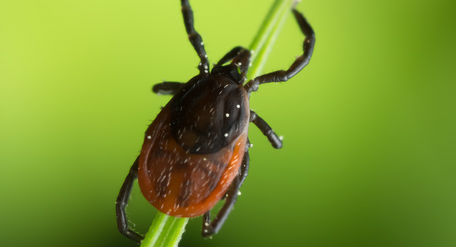
Tick Safety
According to the University of Wisconsin-Madison 16 tick species can be found in Wisconsin and they are most active from April to September. This is a concern for outdoor enthusiasts because some ticks do spread diseases. Of the tick species found in Wisconsin the most common are the deer tick and wood tick.
Deer ticks are tiny forest dwellers that spread Lyme disease. Adult deer ticks are about the size of a sesame seed and are known for their eight black legs. Wood ticks are not known to spread disease in Wisconsin although they do spread Rocky Mountain spotted fever in other parts of the country. In most of the US the wood tick is more commonly called the American dog tick. Adult female wood ticks are about ¼ inch long. Both species of ticks feed on blood. They wait in tall grass or dense vegetation until they get a chance to latch onto a passing mammal, which could be a deer, a dog or hiker enjoying the outdoors. It’s important to note that ticks will increase in size greatly when they have engorged with blood.
If you’re going to be in outdoor areas that are likely to have ticks, such as dense grassy vegetation and wooded areas, you’ll want to protect yourself. The best defense against ticks is to avoid tick prone areas by staying in cleared or mown paths. Also, long sleeves, pants, and socks will help by physically preventing ticks from getting to your skin. Better yet, if the clothing is lightly colored ticks are easier to spot. If you do need extra protection the repellent permethrin can be found in sporting goods stores and it is designed to be applied to your outdoor clothing. Permethrin is not easily absorbed by your skin and is very effective as a tick repellent. It can be long lasting on clothing and does not stain. Dogs are also vulnerable to diseases harbored by ticks. A veterinarian can help you find the best way to protect your dog which may include sprays or Lyme disease vaccines. There is currently no Lyme disease vaccine for humans.
When you complete your outdoor activity be sure to do a thorough visual check for ticks. You may need a mirror or a partner. Pay close attention around your joints, behind the ears, at the waistline, and at hair lines. If you find an embedded tick removing it quickly is important for disease prevention. Remove the tick with tweezers using a slow, steady pull or contact your primary care physician.



